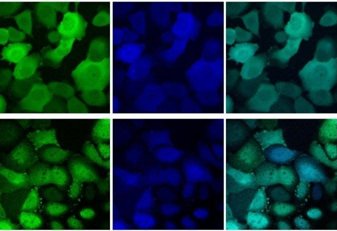The tumor's behavior is described based on the intensity of radiation dosage.
Observing in vitro changes in tumor cells, scientists found that the mechanism of cellular response is influenced by the dose rate of radiation.
“At low dose rates (LDR), when the radioactive source is present in the tumor for an extended period, the slow DNA damage allows the cells to recover. As a result, they age but do not die, sending signals to neighboring tumor cells that become more aggressive,” said Sergey Soroko, the study's author and deputy director of the Lobachevsky State University Institute of Biology and Biomedicine.
In contrast, conventional high dose rate (HDR) radiotherapy causes more significant DNA damage, leading to cell division disruptions and cell death; however, this type of radiotherapy can also trigger the formation of giant cells.

“These cells are much larger than normal cells, cannot divide, but continue to accumulate genetic material for division. Their size enables them to detach from the tumor and 'travel' through the bloodstream, becoming a source of metastases,” explained Sergey Soroko.
Researchers now plan to investigate which cellular processes lead to adverse outcomes and how to prevent them at various stages of cellular response development. This could result in the creation of radiotherapy protocols with new parameters for dose strength and exposure duration.
“At Lobachevsky State University, we intend to study the aging of cells under low dose radiation exposure. This may not only contribute to the development of cancer but also accelerate the aging of bodily systems. This risk is particularly relevant for astronauts who are constantly exposed to radiation aboard spacecraft. It is essential to track all control points in the development of cellular responses to radiation to manage these processes and develop new protective measures,” said Sergey Soroko.
The research was conducted by scientists from the Department of Biophysics at the Lobachevsky State University Institute of Biology and Biomedicine, in collaboration with specialists from the Nizhny Novgorod Regional Clinical Oncology Dispensary.
The results have been published in the high-ranking international journal Current Issues in Molecular Biology.